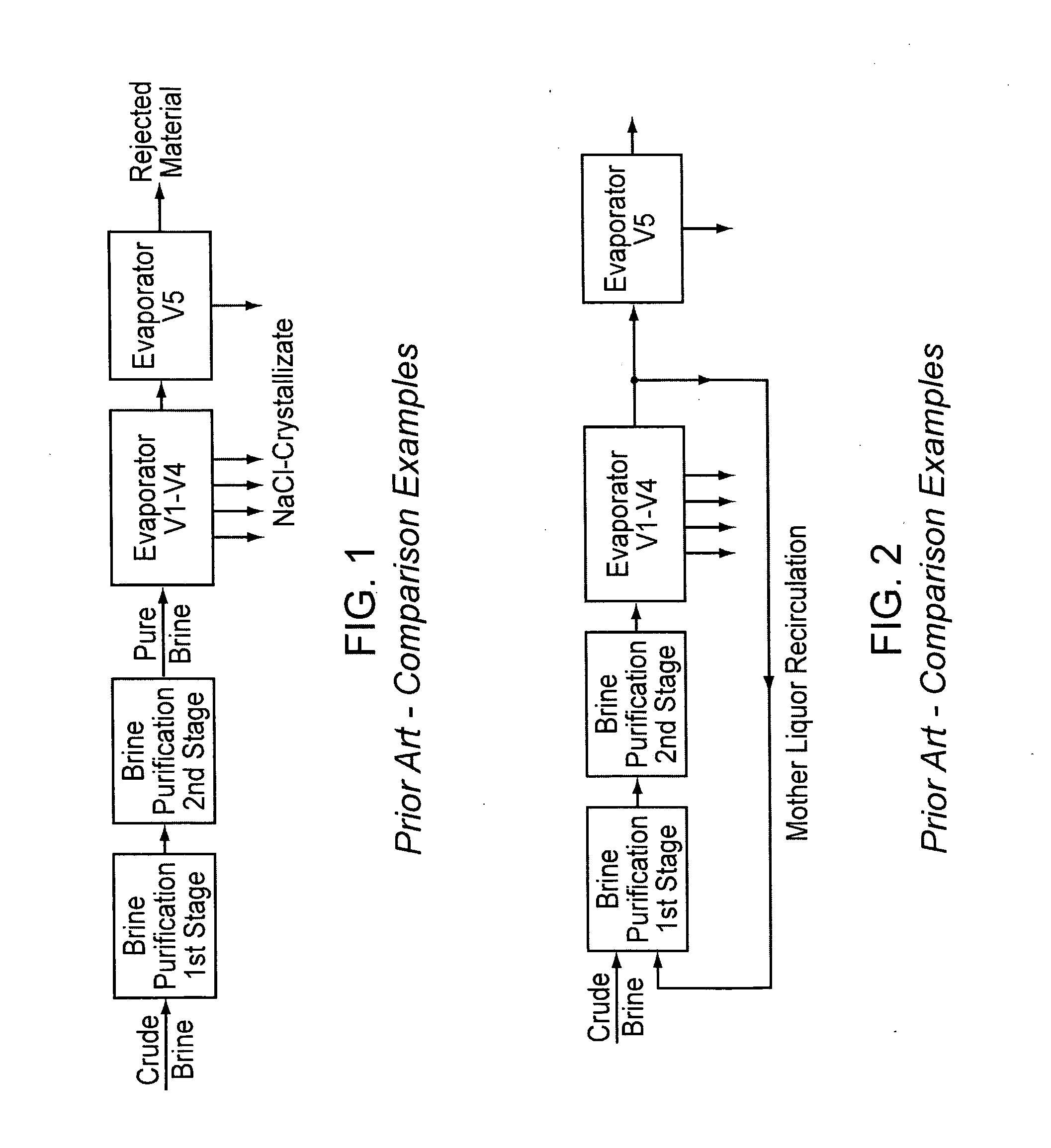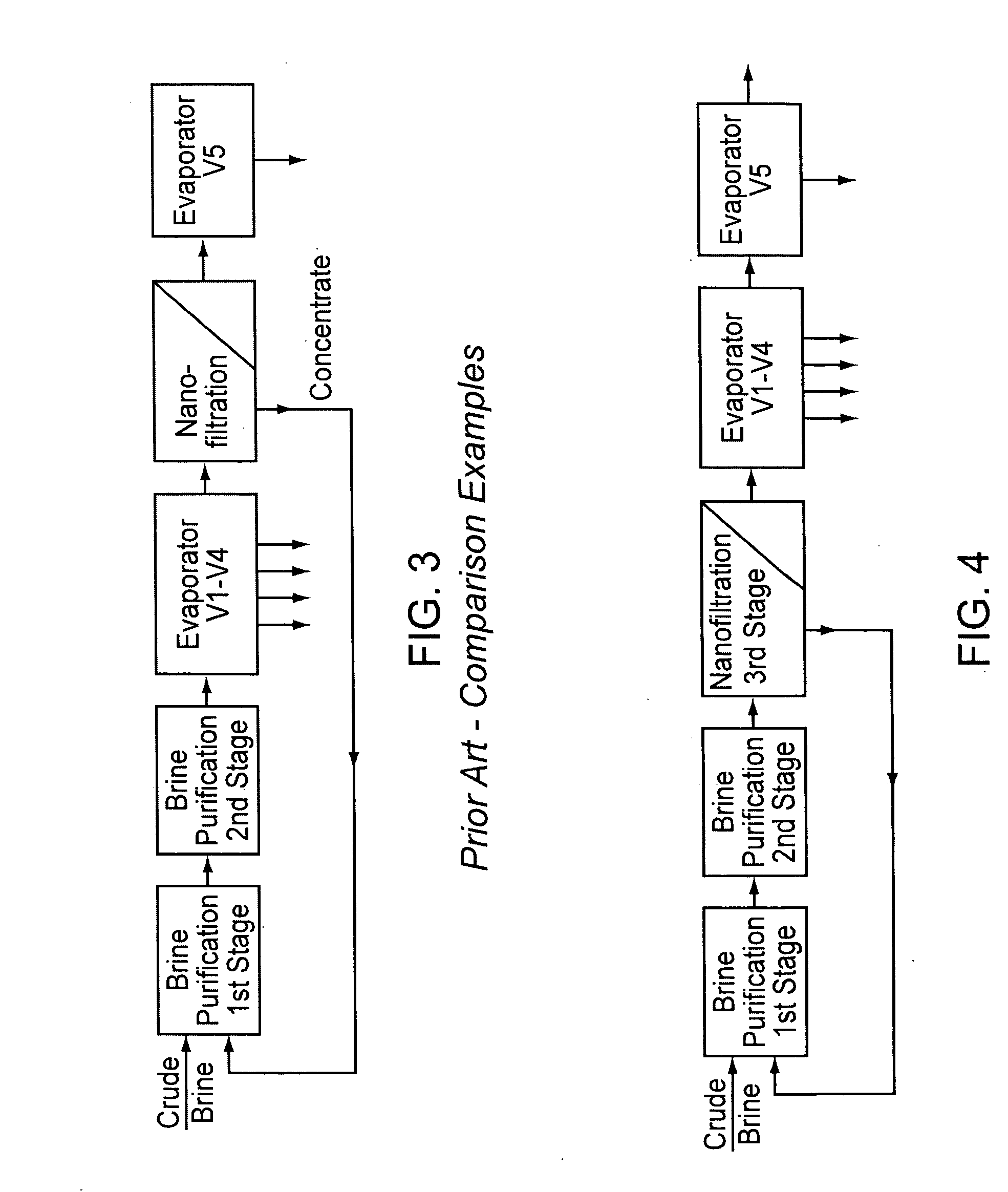Method for the treatment of salt brine
a technology of salt brine and purification method, which is applied in the field of purification method of salt brine, can solve the problems of reducing the performance capacity and reducing the performance capacity and the requirements of evaporated salt produced in a conventional manner, and reducing the useful life of system parts. the effect of reducing the cost and facilitating the production of low-bromide sal
- Summary
- Abstract
- Description
- Claims
- Application Information
AI Technical Summary
Benefits of technology
Problems solved by technology
Method used
Image
Examples
case 4
[0050] Case 4 represents the invention. In cases 2 and 3, a step takes place after evaporator stage 4, in which the mother liquor is partly recirculated into the first stage of brine purification, or in which the mother liquor is nanofiltered and the concentrate is recirculated, respectively, and the evaporators 1-4 are included in the recirculation circuit. In cases 1 and 4, on the other hand, brine purification and crystallization are strictly separate. The calculations of the examples were carried out using the calculation formulas listed in the annex of the patent EP 1 202 931 (herein incorporated by reference), which are based on mass balances that are generally known to a person skilled in the art.
TABLE 1Comparison of the four method variants for boiled salt productionCase 1Case 2Case 3Case 4Relative soda123%100% 15% 15%consumptionRatio of bromide1.01.51.51.0content ofthe purebrine / crude brineRatio of0.81.12.50.18sulfate contentof the purebrine / crude brineRatio of11.09.62.52.4...
PUM
| Property | Measurement | Unit |
|---|---|---|
| Concentration | aaaaa | aaaaa |
| Crystallization enthalpy | aaaaa | aaaaa |
Abstract
Description
Claims
Application Information
 Login to View More
Login to View More - R&D
- Intellectual Property
- Life Sciences
- Materials
- Tech Scout
- Unparalleled Data Quality
- Higher Quality Content
- 60% Fewer Hallucinations
Browse by: Latest US Patents, China's latest patents, Technical Efficacy Thesaurus, Application Domain, Technology Topic, Popular Technical Reports.
© 2025 PatSnap. All rights reserved.Legal|Privacy policy|Modern Slavery Act Transparency Statement|Sitemap|About US| Contact US: help@patsnap.com



